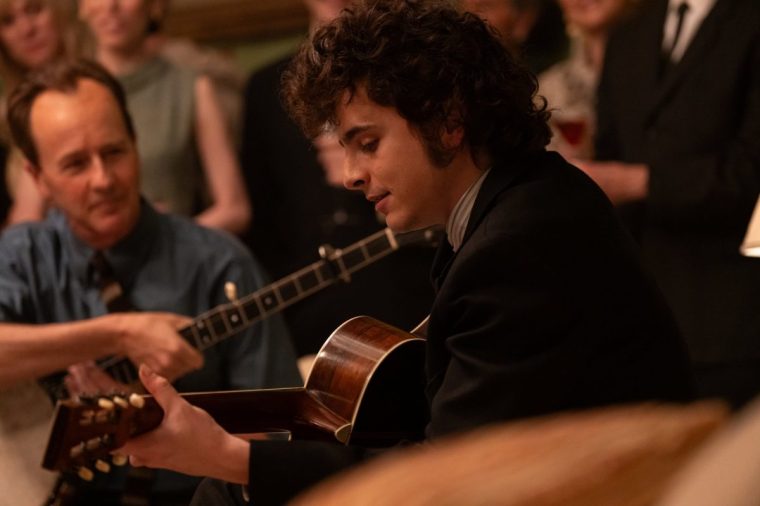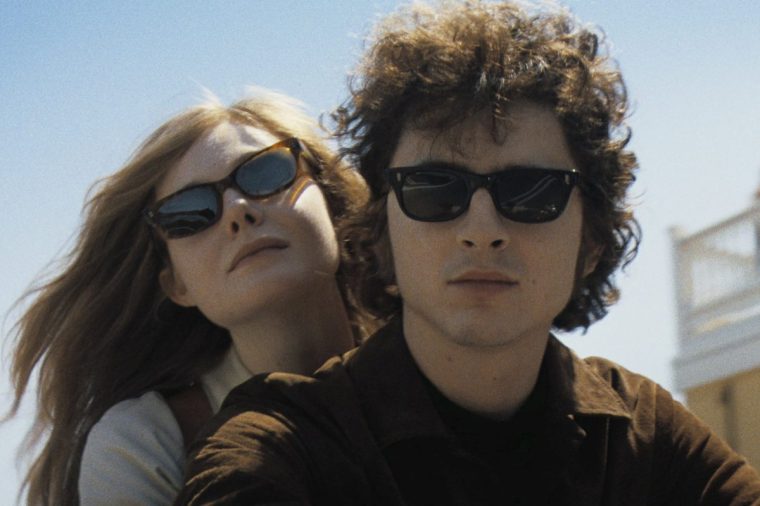First off, A Complete Unknown is a great film – very watchable. Bob Dylan obsessives (cultists even) will see it over and over, analysing every frame. Its two hours flashed by. I was engrossed – even as I mentally corrected its multifarious chronological infelicities.
Director James Mangold has said there’s one totally made-up scene, but A Complete Unknown is chock-full of them. The film spans four tumultuous years, taking Dylan (played by Timothée Chalamet) from just another Village wannabe to global phenomenon. Fame seemed alluring, yet it almost broke him – as the movie does a good job of showing – and a lot happened, so inevitably events get conflated. But shouldn’t key events remain sacrosanct, providing the architecture of the film?
Mangold might stress it’s not a biopic, but it will be taken as one by those knowing little or nothing about Dylan and the “scene” from which he emerged. Like JFK, Pearl Harbour, or Amadeus, it will be regarded as celluloid history when it’s nothing of the sort.

From the opening scene, as Dylan emerges from a road tunnel into Lower Manhattan (no one disputes his arrival Uptown via the George Washington Bridge), to its closing scene of his first electric performance at the 1965 Newport Folk Festival – (there was booing but no riot) – it’s as picaresque as the endless tales Dylan spun of growing up in a carnival.
For starters, Dylan did not head straight from Minnesota to Greystone Hospital to see dying folk legend Woody Guthrie, and there befriend singer-songwriter Pete Seeger. He met Guthrie a few weeks after arriving in Manhattan, at the home of folk music enthusiasts who hosted Sunday afternoon gatherings where friends could visit Guthrie on awaydays from hospital. Dylan didn’t greet him with a “Song to Woody” serenade, either – this was written shortly after their first meeting.
We truly enter fantasy land when Dylan plays at Gerde’s Folk City – an open-mic night with Joan Baez, where Seeger is MC. It’s supposed to be September 1961, but at this time Baez is already a national sensation with chart-topping albums, having made her debut at the 1959 Newport Folk Festival. She never played in Greenwich Village. Nor was she in New York and in a total panic (no one was!) on that make-or-break night of the Cuban Missile Crisis.
As Baez races to leave the city, we see her pass the iconic Gaslight club, where she hears Dylan’s “Masters of War” waft up the basement stairs. Within a couple of hours, they’re in bed in the West 4th Street apartment he shares with his girlfriend Sylvie Rosso (in reality, celebrated The Freewheelin’ cover girl Suze Rotolo) who was in Italy. None of that is true! And both women had split with Dylan before Newport ’65.
More egregious is the ignoring of so many figures crucial to Dylan’s ruthlessly determined rise to fame: blink and you miss Dave Van Ronk, whose arrangement of “House of the Rising Sun” Dylan stole for his album debut. Terri Thal – Van Ronk’s then-wife and Dylan’s first manager – is whited out, too. As are Izzy Young, Ramblin’ Jack, the Clancy Brothers, and Judy Collins.
Robert Shelton, the New York Times critic who wrote the crucial review that propelled Dylan’s career, is seen only briefly – yet he was a Village fixture. Folk trio Peter, Paul and Mary, who put Dylan’s songs in the charts, are ignored, though Peter Yarrow (who died recently) features as Newport MC.

Where’s Vietnam and the civil rights movement? Both cast a long shadow over everything, yet were fleetingly alluded to. And where’s Newport 1963, at which Dylan arrived (as Shelton wrote) “an underground conversation piece” and left a star?
Timothée Chalamet and Monica Barbaro are excellent as Dylan and Baez. They really capture their essence, as does Edward Norton as Pete Seeger. So see the film – then go home and explore the real story of that extraordinary Greenwich Village scene.
Liz Thomson is the author of Joan Baez: The Last Leaf and the revising editor of Robert Shelton’s biography Bob Dylan: No Direction Home. She is the founder of The Village Trip, an annual festival celebrating Greenwich Village.














